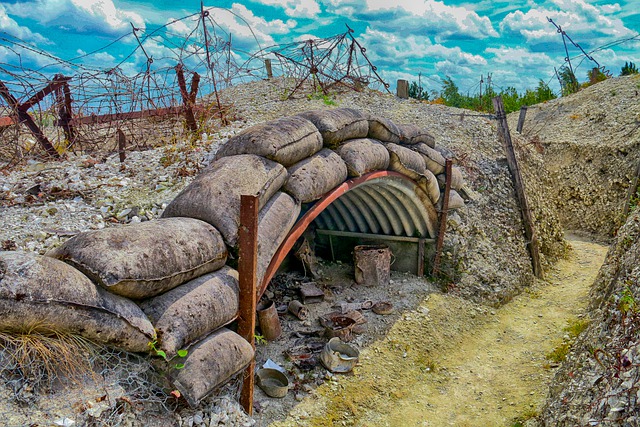
A trench is a furrow dug by soldiers to protect themselves from enemy attacks.
Trench is a concept that comes from trincera , an Italian term. The concept allows us to mention the furrow that soldiers make in the ground with the aim of protecting themselves from enemy attacks.
Typically, two types of trenches are built. On the one hand, parallel trenches are dug, where soldiers take cover while shooting. On the other hand, zigzag trenches are drawn that serve as communication routes between the parallel trenches.
trench warfare
Trench warfare is a mode of combat in which soldiers maintain their fixed line in the trenches. Both armies, in this way, are located in trenches that face each other.
The development of firearms , which increased their range, and the creation of increasingly numerous armies , led to the emergence of trench warfare. By protecting themselves in the trenches, soldiers had the possibility of attacking and damaging the enemy from a considerable distance, and at the same time defend their position against the eventual opposing advance.
Trench warfare reached its peak during the First World War , especially on the so-called Western Front . Between 1914 and 1918 thousands of people died in these trenches.

The trenches had their heyday in the First World War.
The concept in cinema
Within the world of cinema we find a film that uses the word that concerns us now in its title. We are referring to the film “The Trench” , which was released in 1999 and is directed by William Boyd.
Daniel Craig, Paul Nicholls, Julian Rhind-Tutt and Cillian Murphy are some of the actors that make up the cast of this British production that develops its plot during the First World War. Specifically, it tells how young soldiers, hours before the famous Battle of Somme begins, are encouraged and instructed to fight to the end with their army and destroy the Germans. A situation that will give rise to one of the bloodiest episodes of that entire war conflict.
Books “Letters from the trench” and “The last trench”
Within the literary field, there are also many works that use the term in question in their titles. This would be the case, for example, of “Letters from the trench”, a work done by Carme Manuel or Ignacio Ramos that delves into the aforementioned First World War. It does so through characters, events, writers and other elements that give its own and deep vision at a multidisciplinary level of said conflict.
In the same way, we cannot forget “The Last Trench” (2016). Luis Fernando Rodríguez and F. Javier Álvarez are the authors of this book, which is a tour of current Spanish justice through its most recognized figures and the most relevant judicial cases on the social scene.
The notion as a space of struggle
Currently, the idea of a trench is used symbolically to name a space for confrontation or struggle .
For example: “If the president believes that he no longer needs me in the Ministry of Economy, I will surely go to another trench to continue defending this political project,” “The Portuguese striker remained in the trench the entire game, trying to score the goal that "He could give the classification to his team."
